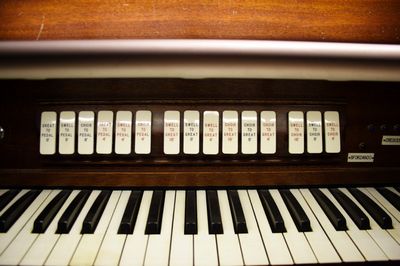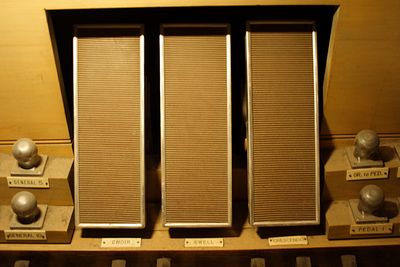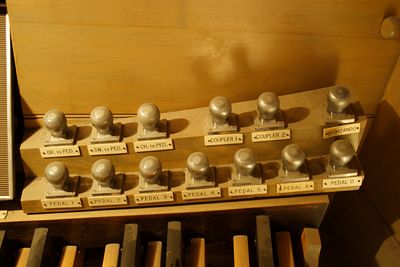| List of Pipe Organ Profiles | Pipe Organ Profiles Home | N8RRB Home | E-mail the Webmaster |
| Mershon Auditorium - 3/67 Schantz | Main Page | Great Division | Swell Division | Choir Division | Pedal Division | Console | Other Photos | Stop List |
Mershon Auditorium
Columbus, OH
3/67 Schantz
1957
Photos of the Console
Click on the photo to see a larger image
 |
 |
| Auditoriums
are used for many different types of events, as a result
they need to be flexible to the needs of the space. To facilitate this,
the Mershon Auditorium's Schantz console sits on a platform which can
be moved around (to an extent) on the stage. When not in use,
the console
is kept in a storage area in the back of the building. Similar to the Robert Morton Organ at the Ohio Theatre in Columbus, the console sits on the house left (stage right) side of the stage. The organ's pneumatic and electrical connections are in the wings on this side of the stage so its movement is restricted. |
|
 |
Next
to the coupler tabs is a set of indicator lights for the organist. The
Crescendo lights illuminate from left to right with more lights
illuminating the farther the Crescendo pedal is pressed. In this photo
it is showing that the pedal is pushed as far as it will go. Depressing
one of the Sforzando thumb or toe pistons will illuminate the light on
the console. Wind indicates the organ is on. 16's off mean just that -
any rank that extends down to 16' pitch will not play that far. The
Stage light likely is something that can be activated by a remote
switch in the stage wings by a stage manager. |
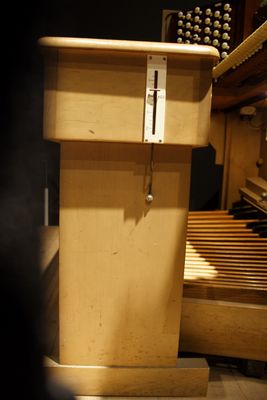 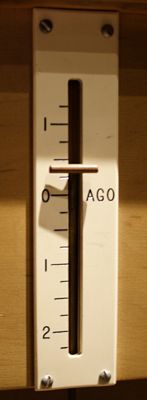 |
Like
most organ benches, the height can be adjusted using a crank (not
shown) to meet the needs of the organist. The setting marked "AGO"
referrs to a specific bench height as stated by the American Guild of
Organists. The AGO has published a set of standards for organ console
construction. This includes things such as bench height, pedal board
radius and many other items. Here
is a link to the standards book.
|
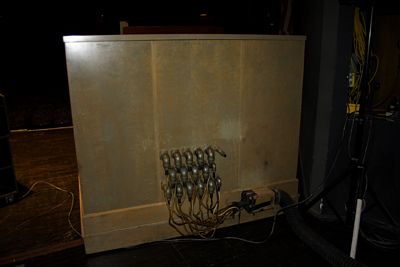 |
Here is a view of the back of the console. This is an electro-pneumatic console meaning that things work with a combination of electricity and air. In back are several air connections which operate parts of the console. While the entire organ is playable, the combination action which is driven in part by the air does not work, meaning that all registrations must be set manually and cannot be saved. The console is definitely due for an overhaul! |
 |
The Schantz Organ Company
has been in business since 1873 and is still a family run company.
Unlike many organ builders, Schantz does not assign opus numbers to its
instruments. However, occasionally you will find a job number written
in some areas. The Check Combinations button allows an organist to see what has been preset without actually changing the current registration. This is sometimes called "blind check". |
| Mershon Auditorium - 3/67 Schantz | Main Page | Great Division | Swell Division | Choir Division | Pedal Division | Console | Other Photos | Stop List |

